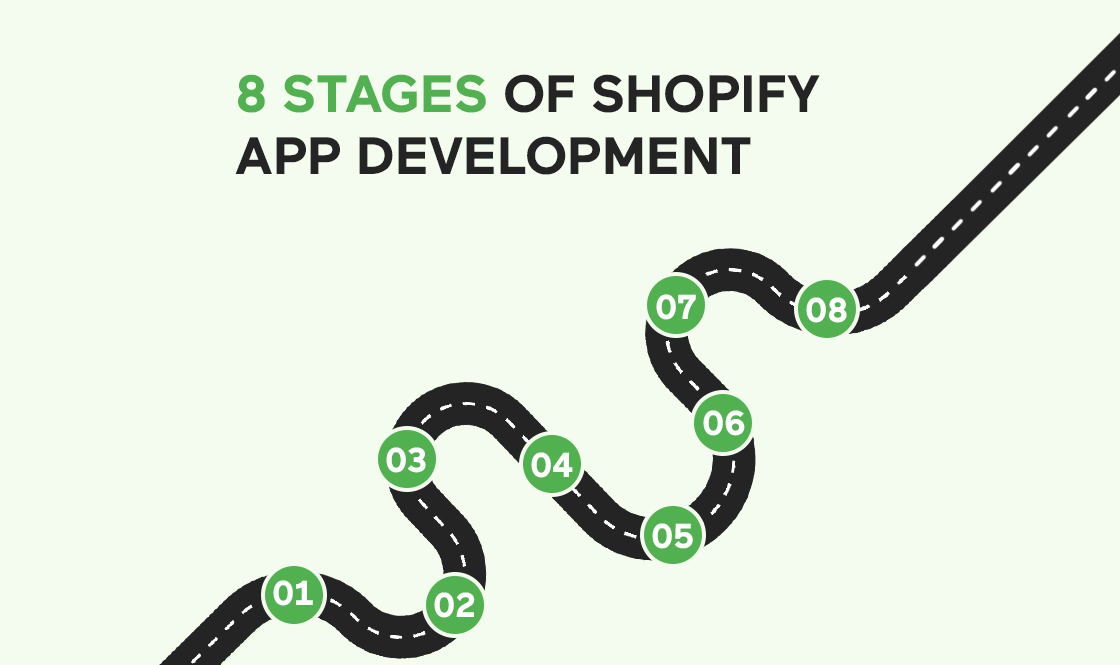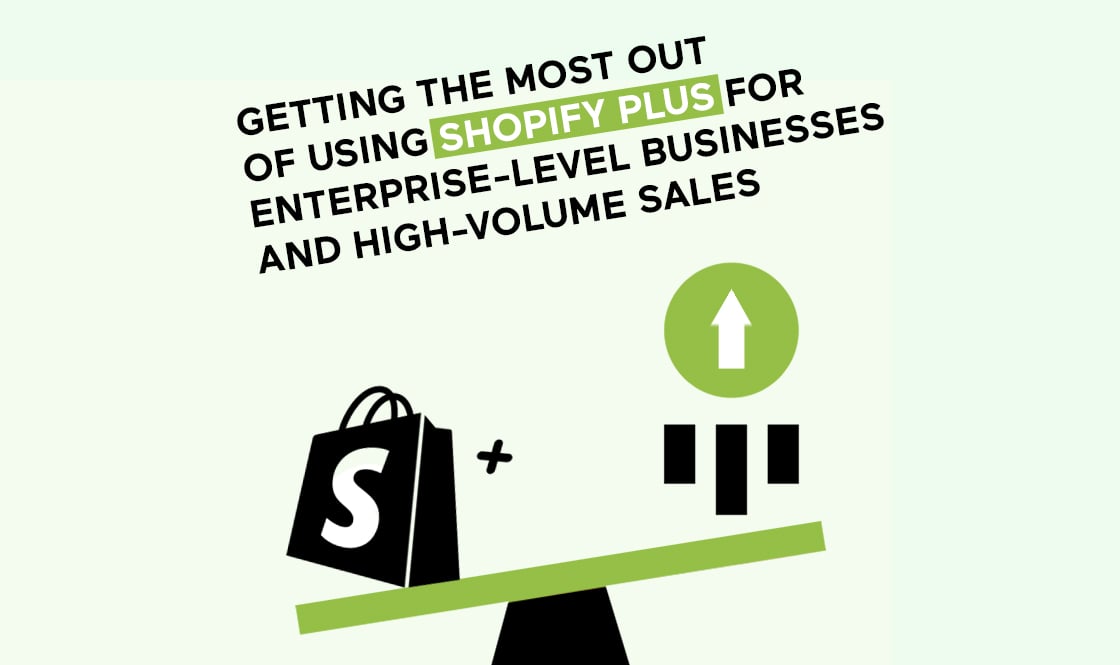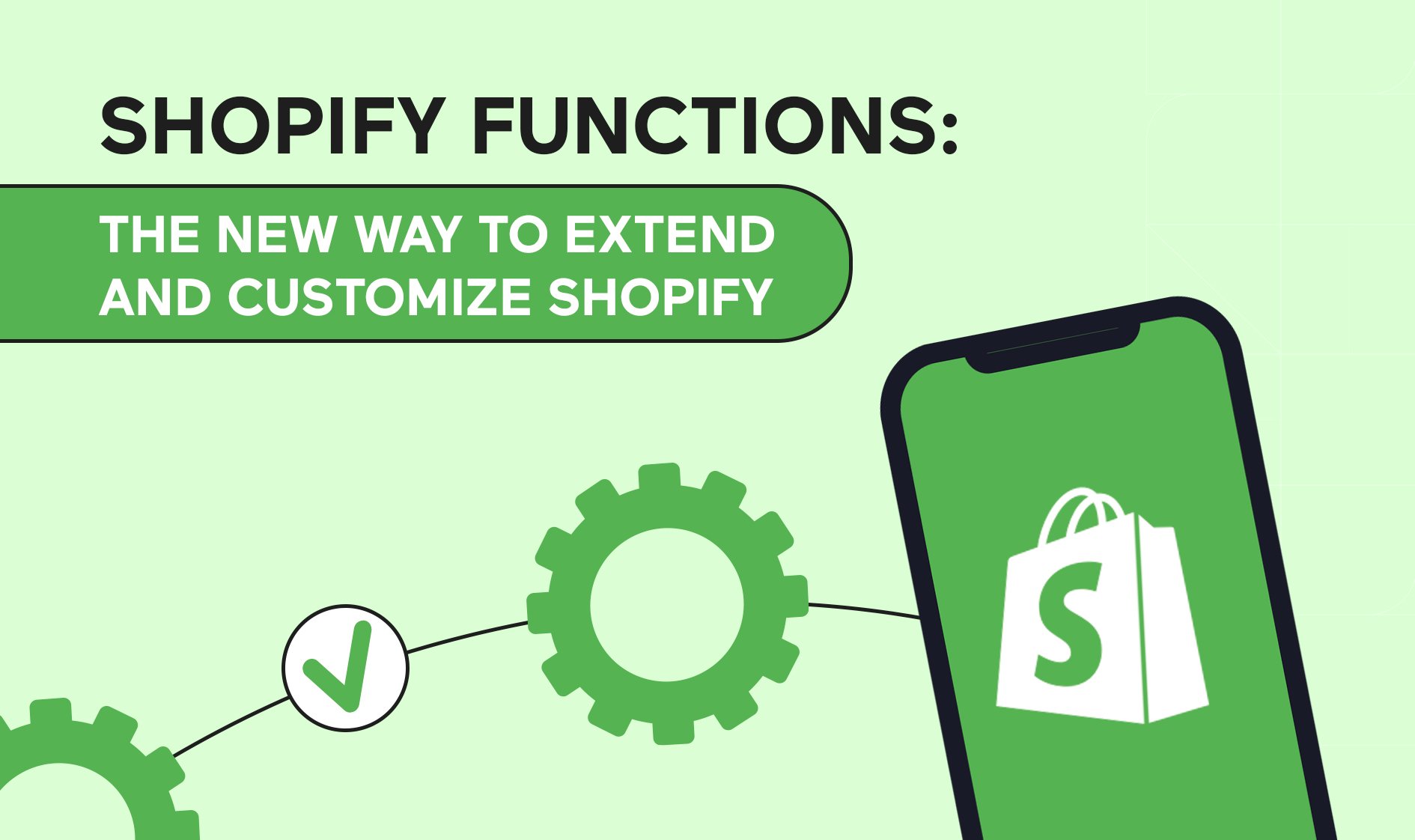
The world of commerce has experienced a significant shift towards creating better experiences for online shoppers, with a large number of businesses leveraging different online platforms to reach more customers. To cater to the expanding business landscape and user behaviors, businesses are constantly seeking innovative ways to get in front of the correct customers and improve their overall customer experience. The platform that has played one of the larger roles in revolutionizing the e-commerce industry is Shopify.
Let us introduce you to one of Shopify’s latest features that is going to truly change the way you will sell online and something you will want to learn about – Shopify Functions. In this article, we will delve deeper into what Shopify Functions are, how they work, and how businesses have benefited from using them.
What are Shopify Functions?
Shopify Functions are serverless functions written in JavaScript that provide a way for developers to customize and extend the functionality of the Shopify platform, making the process of building and running a Shopify online store even smoother and more robust.
If you are a non-technical store owner reading the above, I can explain it a bit more simply without the technical jargon. Imagine you have a toy store that is on Shopify, and Shopify is like a big building where you put all your toys in order to sell them. Now, Shopify Functions are like magic helpers that can help you perform cool things in your store. These helpers can make your store look much more professional, help your customers find any of your toys more easily, or even help you count how many toys you have left in your inventory.
Shopify Functions are different from traditional Shopify apps in that they are more flexible, scalable, and easier to build. With Shopify Functions, developers can create custom functionality, automate tasks, and integrate with third-party services as I described in plain terms above. These serverless functions are executed in response to events that occur within the Shopify ecosystem, and they interact with Shopify’s APIs, access data stored in the Shopify database, and trigger actions within the Shopify platform itself.
You can now use Shopify Functions as a flexible and powerful way to customize and extend the functionality of your Shopify store. They provide endless possibilities to create a truly unique and powerful online store that stands out from the competition. However, custom functions do require a certain level of technical knowledge and expertise and in most cases require an engineer or technical skills. If you’re not comfortable with coding or this is your first time jumping into Shopify Functions and you are having problems or questions, you may want to consider working with a Shopify expert or partner to build and maintain your custom functions.
Why did Shopify Create Shopify Functions?
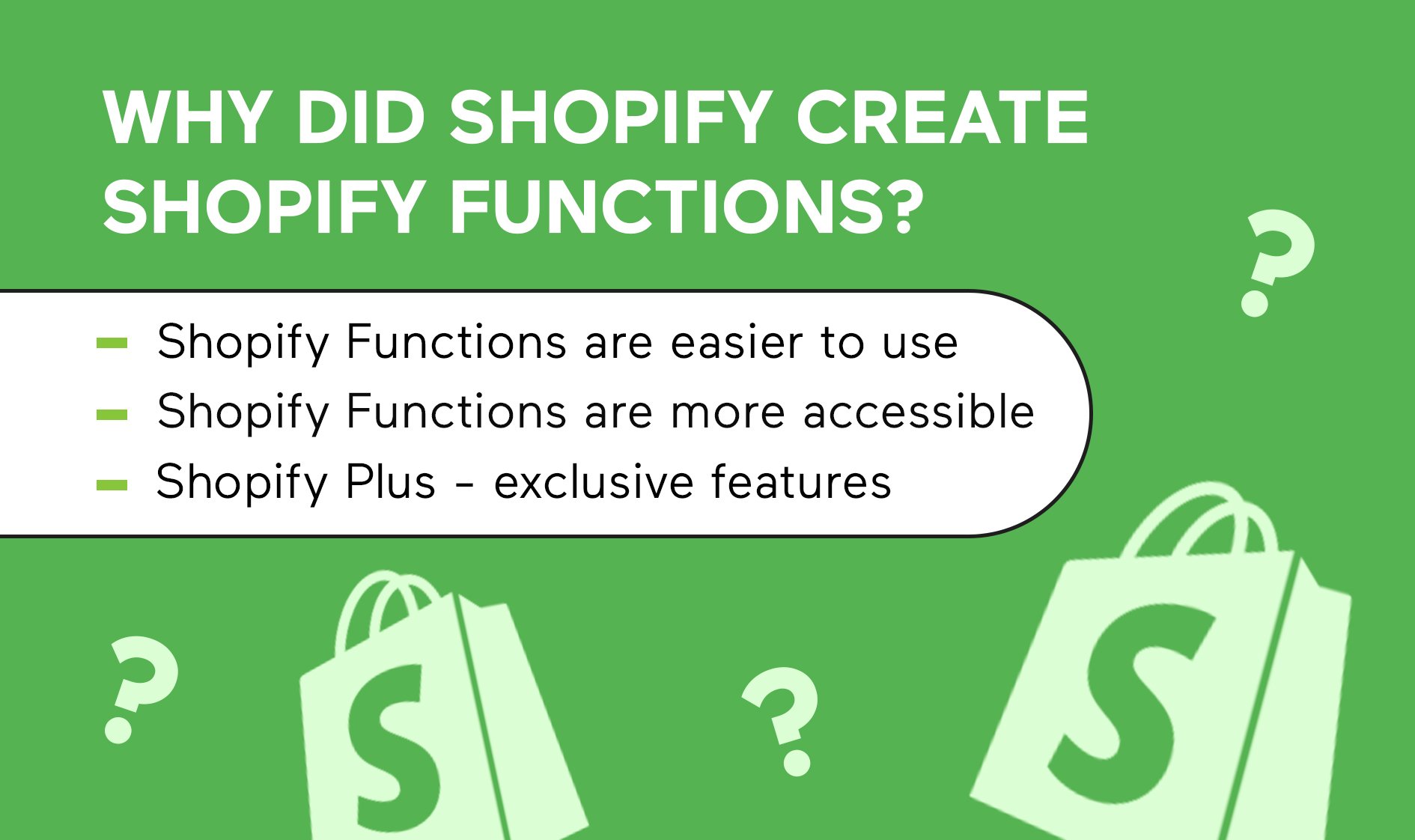
Shopify understands how crucial it is for merchants to create compelling promotions and offer one-of-a-kind purchasing experiences that set their brand apart from the rest. And that’s precisely why Shopify Functions exist – to help merchants unlock their creativity and take their brand to the next level!
Shopify Functions are easier to use
With Shopify Functions, there is no more hassle of modifying code to adjust promotions. Functions can be installed like any other app and are configured within the Admin, alongside Shopify’s built-in features.
Shopify Functions are more accessible
By being distributed in apps, Functions are easily available for purchase to all merchants within the Shopify App Store.
Shopify Plus-exclusive features
This exclusive feature allows Shopify Plus brands to create their own Functions and distribute them to their store in a custom app. If there is no specific discount, shipping, or payment use case available in the Shopify App Store, or if the use case is too niche or advanced for their general needs, Shopify Plus brands can build the functionality that they need themselves.
New Shopify Functions APIs
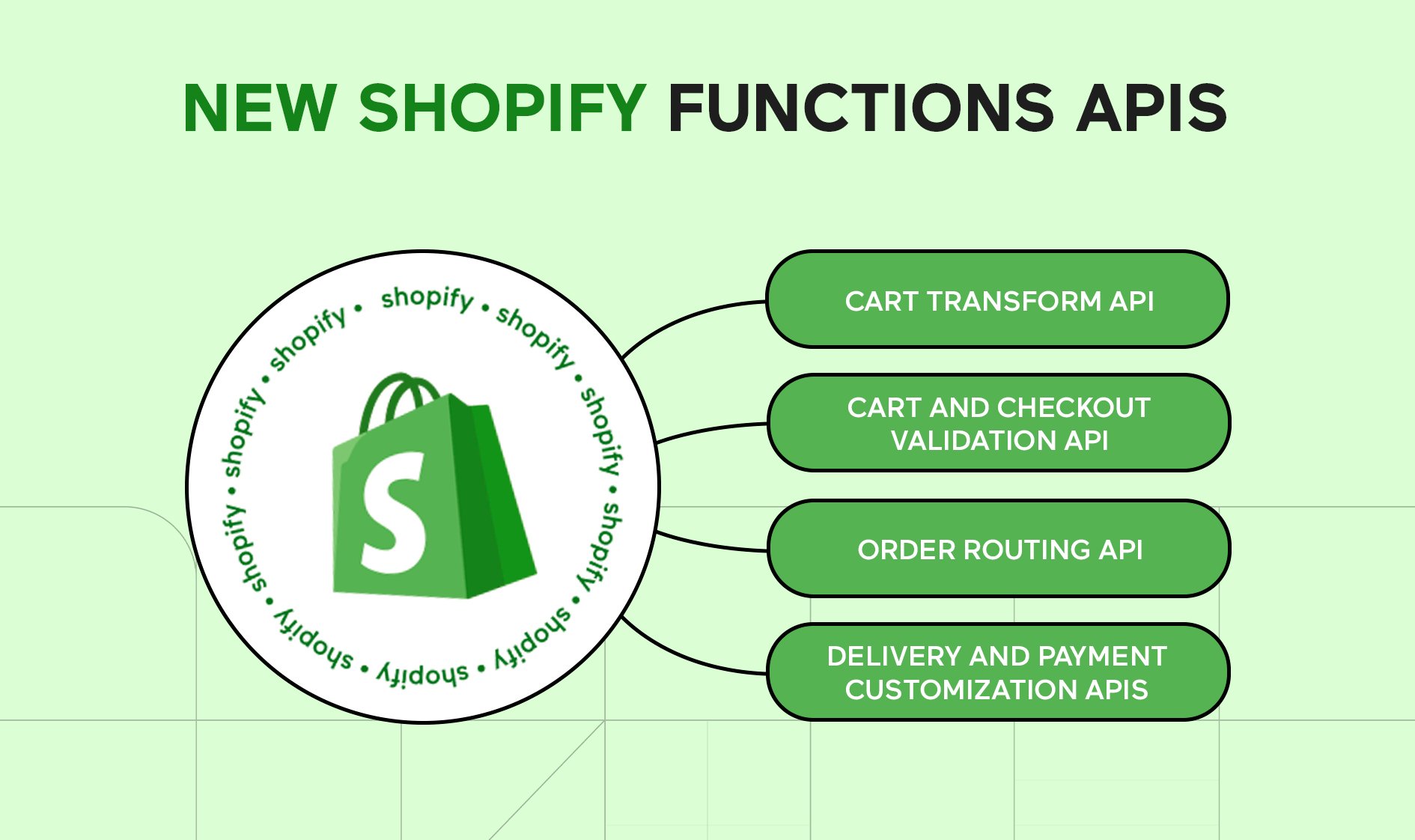
1. Cart Transform API (Developer preview)
The Cart Transform API allows developers to modify the contents of a customer’s shopping cart. This means merchants can now offer unique and dynamic promotions, upsells, and cross-sells at the cart level, increasing conversion rates and boosting revenue.
2. Cart and Checkout Validation API (Developer preview)
With the Cart and Checkout Validation API, developers can ensure that customers provide accurate and valid information during the checkout process. This API helps merchants avoid costly errors and reduce cart abandonment, ensuring a smooth and efficient checkout experience for their customers.
3. Order Routing API (Developer preview)
The Order Routing API allows developers to customize the routing of orders to specific locations based on a variety of criteria, such as shipping address or inventory availability. This feature streamlines the fulfillment process and ensures that orders are shipped from the most appropriate location, improving delivery times and customer satisfaction.
4. Delivery and Payment Customization APIs
Delivery and Payment Customization APIs offer a range of options for developers to create unique delivery and payment methods for their customers. With these APIs, merchants can offer customized shipping rates, pickup options, and payment methods, giving customers greater flexibility and choice when making a purchase.
There are endless possibilities when it comes to Shopify Functions. Imagine being able to completely customize your online store, making it a true reflection of your brand’s unique personality that you know will resonate with your users. Whether you want to enhance your product pages with additional features, optimize your checkout process for a better customer experience and conversions, or add custom functionality to your store, Shopify Functions is a good place to start to find that answer.
In a world where every business is striving to stand out, Shopify Functions gives you the tools to set yourself apart from the rest. So why settle for a generic online store when you can create something truly unique and memorable? Get creative, let your imagination run wild, and build your Shopify online store a true reflection of your brand’s personality. If you have any questions about how to use Shopify functions, please reach out to our team and we are happy to provide advice and guidance on the best ways to use them.


